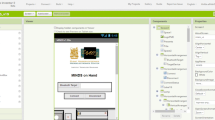Abstract
This paper exhibits a minimal effort and adaptable home control and checking framework for getting to and controlling gadgets and machines remotely utilizing Android-based smart telephone application. The depiction about the incorporated system architecture and the interconnecting instruments for the solid estimation of parameters by smart sensors and transmission of information by means of web is being exhibited. Home automation or smart home involves the control and computerization of lighting, aerating and cooling, warming, ventilation, and security as well as home appliances. It uses Bluetooth for remote checking and is a component of the Internet of things. The system will be operated on two modes, autonomous and semi-autonomous. To show the plausibility and viability of this framework, gadgets, for example, light switches, control plug, temperature sensor, and humidity sensor, have been coordinated with the proposed home control framework. The framework will consist of an exhaust, water tank, and an LED bulb. The exhaust can be used in kitchen/washroom and work accordingly. Water management is an area of field which needs a thought to work on especially, in India. For this, we will be using a motor which will automatically start when the water level reaches to its bare minimum and stops once the water level reaches to the brim. This will help in conservation of water. The third appliance used is an LED bulb which will start to glow if someone enters a room and stops glowing once the person exits.
Similar content being viewed by others
References
D. Surie O, Laguionie T, Pederson ‘Wireless sensor networking of everyday objects in a smart home environment’ <em> Proc, Int, Conf, Intell, Sensors Sensor Netw, Inf, Process, </em> pp. 189–194 2008.
Vermesan, Ovidiu; Friess, Peter (2013), Internet of Things: Converging Technologies for ISBNSmart Environments and Integrated Ecosystems (PDF), Aalborg, Denmark: River Publishers. ISBN 978-87-92982-96-4.
‘An Introduction to the Internet of Things (IoT)’ (PDF), Cisco.com, San Francisco, California: Lopez Research. November 2013, Retrieved 23 October 2016.
Santucci, Gérald, ‘The Internet of Things: Between the Revolution of the Internet and the Metamorphosis of Objects’ (PDF), European Commission Community Research and Development Information Service. Retrieved 23 October 2016.
Mattern, Friedemann; Floerkemeier, Christian, ‘From the Internet of Computers to the Internet of Things’ (PDF), ETH,Zurich. Retrieved 23 October 2016.
Reddy, Aala Santhosh (May 2014), ‘Rea** the Benefits of the Internet of Things’ (PDF), Cognizant, Retrieved 23 October 2016.
Lindner, Tim (13 July 2015), ‘The Supply Chain: Changing at the Speed of Technology’, Connected World, Retrieved 18 September 2015.
H. Sundmaeker P, Guillemin P, Friess S, Woelffle Vision and Challenges for Realizing the Internet of Things Germany Luxembourg: European Union 2010.
Internet 3.0: The Internet of Things Singapore Analysis Mason: 2010.
Evans, Dave (April 2011), ‘The Internet of Things: How the Next Evolution of the Internet Is Changing Everything’ (PDF),Cisco, Retrieved 15 February 2016.
Höller, J; Tsiatsis, V; Mulligan, C; Karnouskos, S; Avesand, S; Boyle, D, (2014), From Machine-to-Machine to the Internet of Things, Introduction to a New Age of Intelligence, Elsevier. ISBN, 978–0-12-407684-6.
Monnier, Olivier (8 May 2014), ‘A smarter grid with the Internet of Things’, Texas Instruments.
‘Research and Markets: Global Home Automation and Control Market 2014–2020 - Lighting Control, Security & Access Control, HVAC Control Analysis of the $5.77 Billion Industry’, Reuters. 2015-01-19, Archived from the original on 2016-05-05.
Author information
Authors and Affiliations
Corresponding author
Editor information
Editors and Affiliations
Rights and permissions
Copyright information
© 2018 Springer Nature Singapore Pte Ltd.
About this paper
Cite this paper
Bhatt, A., Saxena, A., Chauhan, S., Jaiswal, U., Verma, Y. (2018). Android-Based Home Automation Using Bluetooth and ESP8266. In: Singh, R., Choudhury, S., Gehlot, A. (eds) Intelligent Communication, Control and Devices. Advances in Intelligent Systems and Computing, vol 624. Springer, Singapore. https://doi.org/10.1007/978-981-10-5903-2_182
Download citation
DOI: https://doi.org/10.1007/978-981-10-5903-2_182
Published:
Publisher Name: Springer, Singapore
Print ISBN: 978-981-10-5902-5
Online ISBN: 978-981-10-5903-2
eBook Packages: EngineeringEngineering (R0)




